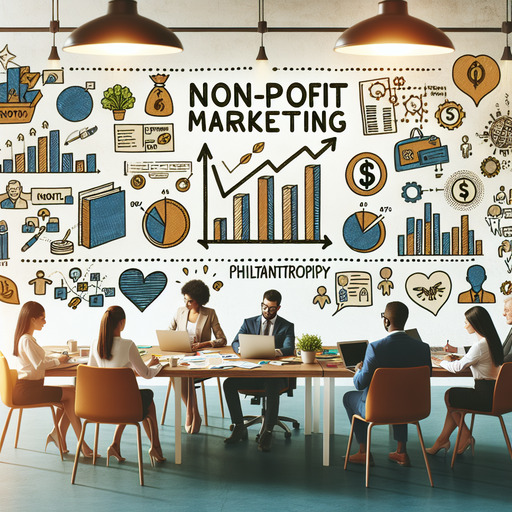
-
Table of Contents
Ready to make a difference? Learn essential strategies and tips to kickstart your journey in non-profit marketing. Explore more here!
Introduction
Non-profit marketing focuses on sharing the mission, values, and services of organizations that aim to make a social impact. Getting started in this field requires a solid strategy that targets your audience, promotes engagement, and builds support. First, it’s important to understand the challenges and opportunities in non-profit marketing. Once you’re aware of these factors, you can develop a marketing plan that aligns with your organization’s goals. Additionally, using digital platforms such as social media, email marketing, and SEO will help you reach a wider audience. Lastly, building relationships with your community and continuously measuring your efforts are crucial for success.
How to Get Started in Non-Profit Marketing: Essential Strategies for Success
Clarify Your Mission and Know Your Audience
The first step in non-profit marketing is understanding your organization’s mission. This mission will guide your entire marketing approach. Next, define your target audience. Knowing who you’re trying to reach makes it easier to craft messages that will resonate with them. For instance, are you focusing on attracting donors, volunteers, or beneficiaries? The more specific you are, the more effective your campaigns will be.
Create a Clear Marketing Plan
Once you have defined your audience, it’s time to build a marketing plan. This plan should include your goals, the channels you’ll use, and a content schedule. For example, if your goal is to increase donations, you might set up a social media campaign to showcase how donations are used. It’s also helpful to set measurable targets, like increasing website traffic by 20% within six months. This allows you to track your progress and make adjustments if necessary.
Use Storytelling to Connect
Storytelling is one of the most effective ways to engage your audience emotionally. Instead of focusing solely on statistics, share real-life stories that illustrate your impact. For example, telling the story of how your organization helped a family in need can inspire more donations or volunteer participation. These stories create a personal connection and make your mission feel relatable.
Leverage Social Media and Email Marketing
In today’s digital world, social media is a powerful tool to increase visibility. Platforms like Facebook, Twitter, and Instagram allow you to interact with your audience and share important updates. To get the most out of social media, post consistently, use images and videos, and engage with comments and messages. Additionally, email marketing is an excellent way to keep supporters informed. Sending regular newsletters helps you stay connected with your audience and build long-term relationships.
Collaborate and Build Partnerships
Partnering with other non-profits, businesses, or influencers can help you extend your reach. Collaborations can lead to new audiences and build credibility for your cause. When looking for partners, focus on those who share your mission and values. This will ensure the partnership feels authentic and beneficial for both sides.
Evaluate and Adjust Regularly
To maintain success in non-profit marketing, it’s important to regularly review your strategies. Use tools like Google Analytics to track website performance or social media metrics to evaluate engagement. By analyzing this data, you can adjust your marketing strategies to better meet your goals. This continuous improvement process is key to building long-term success.
Q&A
1. What are the initial steps to get started in non-profit marketing?
- Clarify the Mission: Understand the organization’s mission and goals clearly.
- Identify the Target Audience: Define who you’re trying to reach, whether it’s donors, volunteers, or the community.
- Build a Marketing Plan: Develop a detailed plan that includes your strategies, goals, and content schedule.
- Leverage Digital Channels: Use social media and email marketing to engage and inform your audience.
- Create Impactful Content: Use storytelling and real-life examples to connect with your audience emotionally.
- Monitor Performance: Regularly review your campaigns’ performance and make necessary adjustments.
For more guidance on non-profit marketing, visit Nonprofit Marketing Guide for additional resources.